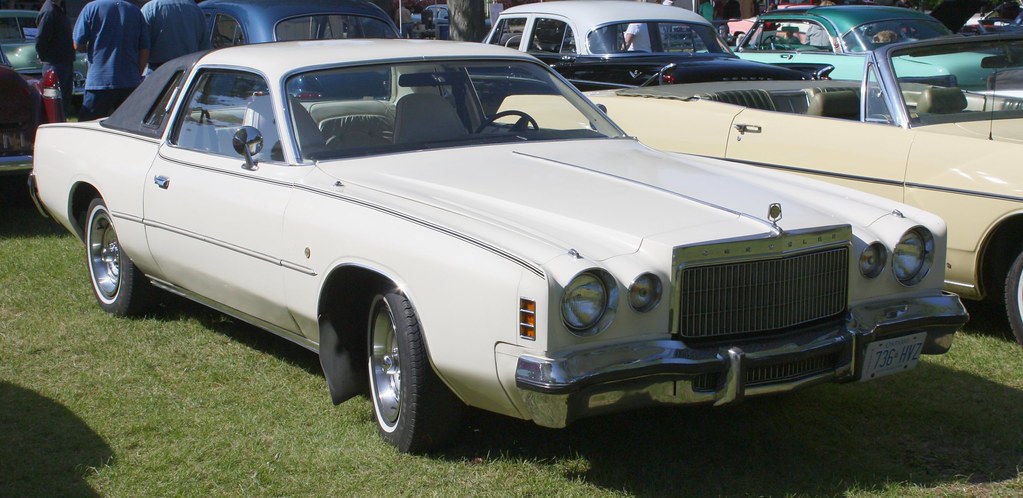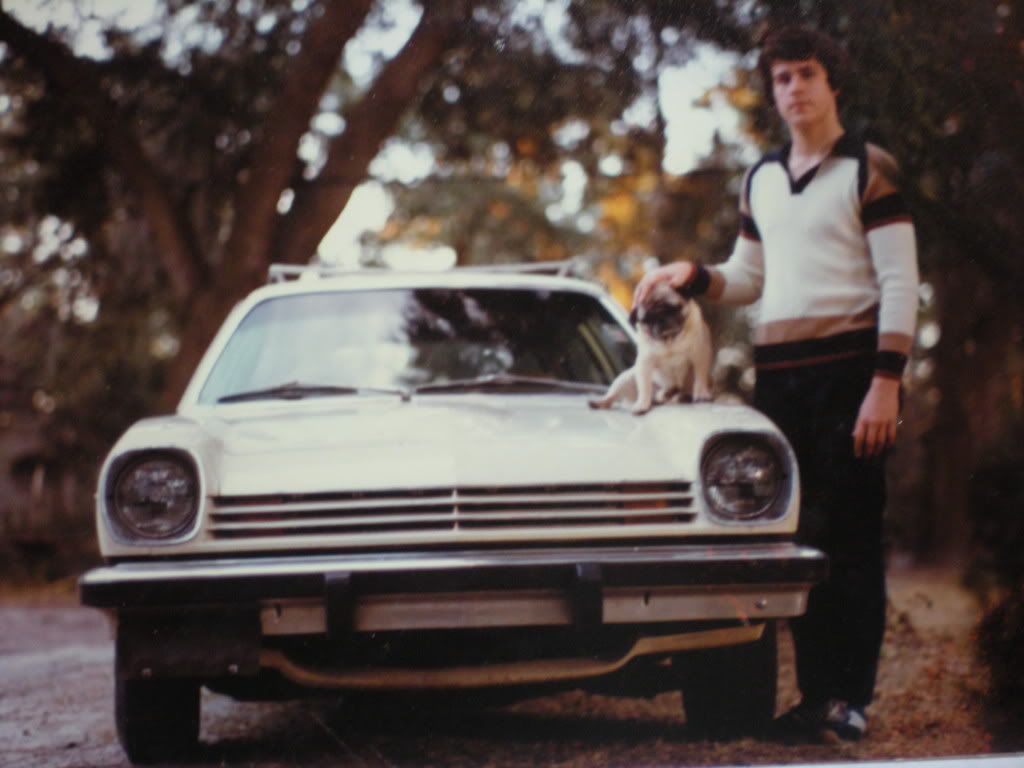Then he talked about a new Chevy coming out soon that was going to be a cross between a Chevy sedan and a Corvette ... the Chevette.
Thank God I didn't wait for the Chevette to come out. Bought a Chrysler Cordoba.

Posted on 06/28/2013 9:20:04 AM PDT by Impala64ssa
Lambrecht Chevrolet of Pierce, Neb., was like many Midwestern, small-town dealers — owned and operated by a family, with minimal overhead and little need for advertising since most customers were neighbors. Ray and Mildred Lambrecht ran the dealership with just one employee for 50 years before closing up, and later this year the Lambrechts will sell off a trove of 500-odd vehicles they've held onto over the decades — including roughly 50 with less than 10 miles on their odometers. It's less a car sale than a time capsule auction.
While many of the cars in the Lambrecht collection were customer trade-ins that were left outside to rot, the Lambrechts would occasionally take something they couldn't sell and just put it in storage. City folk might find it unthinkable to leave so many vehicles lying around for so many years, but there's always more space in rural Nebraska, and the annual costs fall to zero quickly. I wouldn't call it hoarding, but I know many people who gather old metal like this do form an attachment to their kingdom of rust; every ride has a story, even when there's weeds growing around it. Jeannie Lambrecht Stillwell, the Lambrecht's daughter, says the decision to sell wasn't an easy one for her parents, and that the cars "comprise a lifetime of hard work, tears, and joy."
(Excerpt) Read more at autos.yahoo.com ...
I bid $2.00 for the Vega.
I want to drag it out here and shoot full of holes.
OMG, unbelievable! Everything in that place is probably a collector’s item of some kind. Wonder what kind of return on his investment he (or his family) is going to see, and how that compares to parking an equal amount in the stock market for 50 years? No expert, but I’ll bet it’s a pretty favorable comparison. But... it’s too bad he couldn’t have kept it all indoors... 500 cars... he would’ve needed an aircraft hanger.
Things like gaskets dry out when the engine isn't run regularly. The engines will have to be torn down so that every gasket, hose, belt, etc, can be replaced.
Given the way they were stored, I'd be surprised if the internals weren't rusted. Pistons, rings and cylinders, for example.
Ray and Mildred are going to have a big payday coming. Several of those cars will go for far more than they were originally worth ($2,500). Some will go for less, I'm sure. But if they only average $5K per car, they will be getting $2.5 million. I suspect that some of those cars will bring in $15K to $20K. That Vette should go for $20K based on the interior condition and the all original parts alone. If the rust is just surface rust, it can be brought back to original showroom condition right down to the plug wires.

A Vega! Yee haw!
I drove one of those until it got drowned in a flood. Did a cylinder reline of 3 of the cylinders.

A Vega stationwagon. Chicks will be powerless to resist the appeal of a guy driving a Vega stationwagon.
Dude, talking about “jumped out”, look at #1
1964 Pontiac Tempest with a 326..that’s a “GOAT” in sheep’s clothing!
“Do you believe in metal-eating bacteria?
Nothing wears when nothing moves, but they will need tires and paint anyway.”, No but I DO believe in RUST and Seal Dry/Atrophy.
“Yes, a Vega is on the list. I wonder if it comes with its original factory rust.”
All humor has it’s basis in truth, and your comment is hilarious! I had a ‘73 Vega that I inherited from my brother. It started rusting the minute it rolled off the dealer’s lot. It leaked more oil than a BP well. The little sewing machine engine had a dealer AC package installed; if you ran the air and stopped at a light, you had to put it in neutral and give it gas or the compressor would kill the engine. I made a left turn once and the driver’s side door flew open, almost ejecting my date (who declined to repeat the dating experience with me).
The ultimate slam on the Vega; my other brother had a Ford Pinto wagon at the same time. I envied him.
Oh, and you have to drive this from the backseat...
take all the plugs out, fill plug holes with Marvel Mystery Oil. manually turn it over using the fly wheel or by disconnecting the start and turning the key. do that once a day for a week. drain oil and fluids. refill with new and replace plugs.
I have played golf several times with my father in law at the golf course next to where many of these cars are stored in a field. It is incredible how many vehicles are sitting out there, let alone the other ones that were stored inside which I didn’t know about. I am sure all the classic car enthusiasts will consider this a real treasure trove.
(I thought a 1975 Vega wagon was cool. And its design was cool, and I would not refuse to drive a car like that today at all, but its construction was sadly shoddy.)
“fine corinthian leather”?
Pretty much complete, down-to-the-frame teardown and re-assembly.
A few years back, I bought a Sunbeam hedge-clipper that had hardly been used from the mid 60’s or so.
It ran, but very, very reluctantly.
I opened it up to clean it out and ALL the grease in it had mysteriously turned to an epoxy like substance.
Was able to clean it, not as good as I’d like, re-greased and reassemble, runs great!
As far as the cars go, same situation. In addition, ALL the seals are shot, no matter how they were stored.
Brake fluid absorbs water, so you’re looking at new brakes, brake lines, booster... and that’s just the beginning of the list!
So when can I start?
;-)
Yee haw!
I guess so, the dashboard being moved inward to accommodate that V8. Some, I believe, put small V-8’s in there and they fit OK. Vega allowed lots of room under there. It was the perfect car to tinker around and rebuild.
My first car was a ‘74 Pinto. Despite its bad reputation, it was not terrible as a car.
I’ve heard that on a quiet night, you can hear a Vega rust.
I never seen a flat head Chevy. AndI have seen Chevy engines from 1937.
Disclaimer: Opinions posted on Free Republic are those of the individual posters and do not necessarily represent the opinion of Free Republic or its management. All materials posted herein are protected by copyright law and the exemption for fair use of copyrighted works.